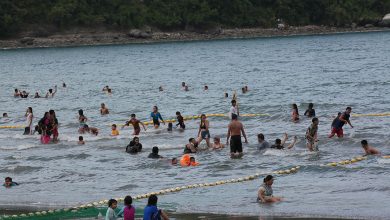The Changing of the St.-Emilion Guards?

UNLIKE the 1855 Medoc Bordeaux Classification, the St.-Emilion Grand Cru Classé Classifications, which started in 1955, and are updated every 10 years or so, has had its share of multiple dramas, including the tumultuous 2006 classification. The most recent 2022 version saw the bolting of the two original Premier Grand Cru Classé A Chateaux: Chateau Cheval Blanc and Chateau Ausone is July 2021. And in early 2022, a third Grand Cru Classé A, Chateau Angeles, which was the center of the controversy because of its ascension to the Premier Grand Cru Classé A from Classé B in the last 2012 St.-Emilion classification, also withdrew from the classification system.
When the latest St.-Emilion Classification was released last September, Chateau Figeac, one of my favorites of all time, and probably overdue, got the sole promotion — moving up from Premier Grand Classé B to its pinnacle rank of Classé A.
Thus, with the withdrawal of the three erstwhile Classé A, Chateau Figeac joined the lone Chateau left from the 2012 Classé A club, Chateau Pavie.
Like most Bordeaux lovers, I feel that some luster from this classification may have been reduced with the departure in particular of one of the most revered Bordeaux wines of all time, Chateau Cheval-Blanc.
The classification, like its effect on the Medoc wines (Classification of 1855) and, to a certain degree, Pessac-Leognan wines (Classification of 1953), may have serious commercial implications.
CONFUSING ST.-EMILION GRAND CRU LABELSAs we have learned with French wines, Grand Cru means “great growth” and these two words on a wine label is a very powerful tool. It commands not only respect, quality, and prestige but also a higher price and better chance of commercial success.
Being in this business, I have learned to accept on the most part how credible and reliable the Grand Cru classification systems are when it comes to wines made by chateaux from Medoc, Pessac-Leognan (Graves), and even the whites of Sauternes-Barsac — all from Bordeaux.
Unfortunately, when it refers to the St.-Emilion classification the term Grand Cru is highly porous and confusing. First, the words “Grand Cru” can be seen on almost every St.-Emilion wine bottle — from the good, to the ordinary, to the inferior quality ones.
Second, Grand Cru in St.-Emilion is different from Grand Cru Classé, Premier Grand Cru Classé A, and Premier Grand Cru Classé B.
And finally, and probably a positive though highly politicized thing, the St.-Emilion classification changes every 10 years or so.
The Premier Grand Cru Classé A is the highest in the ranking, followed by Premier Grand Cru Classé B, and then the Grand Cru Classé. In the latest 2022 classification, there are two Premier Grand Cru Classés A (Pavie and Figeac), 12 Premier Grand Cru Classés B, and 71 Grand Cru Classés. Note that “Grand Cru” in St.-Emilion labels, without the word “Classé” attached is relatively an easy regulation to pass. And because of this, many of these none-“classé” Grand Cru taste ordinary and are devoid of character.
Other French wine regions like Burgundy and Champagne use the Grand Cru term more to classify top performing historical vineyards, so its significance still matters in the label.
WHAT HAPPENS NOWLosing the original 1955 Premier Grand Cru Classés A Chateau Cheval Blanc and Chateau Ausone is indeed a big blow to the credibility of the classification.
Chateau Ausone, for one, is a tiny producer and its wine prices have exceeded those of Chateau Cheval Blanc.
From what was announced to the trade by both chateaux — (I paraphrase) they both felt that the St.- Emilion classification used to be focused on blind tasting results, wine longevity, terroir and history, but now a significant portion — like 35% — is based on marketing, which broadly encompasses international reputation, promotional activities, wine tourism, and distribution — all which have nothing to do with quality.
In the last En Primeur (wine futures) in April 2022, despite the announcements of these two chateaux’ withdrawal from the classification, their wine prices were not at all affected. Perhaps it may take time, but it is hard to see a time when Chateau Cheval Blanc prices will go down given that St.-Emilion chateaux produce far less wines than their Medoc counterparts.
While Chateau Pavie had probably the highest jump in prices since its 2012 ascension to Classé A from B, the same is the trend now in the case of Chateau Figeac, even months leading to the 2022 classification release. I remember still being able to afford Figeac in a Bordeaux wine shop when I last visited in 2019. I am sure even the price of the second label, the Petit Figeac, will also skyrocket with this new Classé A promotion.
Right now, it seems that it’s too early to tell how the classification will change the chateaux that are involved. But on the lower spectrum, the Grand Cru Classé level, more than a handful of new ones were added. Here are the names of some of new ones celebrating their promotion: Chateau Tour Saint Christophe, Chateau Rol Valentin, Chateau La Confession, and Clos Badon-Thunevin.
Chateau Corbin Michotte, which was removed from the St.-Emilion Gran Cru Classé in 2012, has gotten back onto the list.
Let us see how these new Grand Cru Classé wines fare in the market at presumably higher prices in the coming years. Every time a classification affects the business or the financial future of a chateau, there will always be dissension — it is never a perfect system.
For us here in Asia, there is no way we can rely on “hit and miss” wine purchases as there are thousands upon thousands of wine labels to choose from, so the classification from government agencies like the ones in Bordeaux offer very good guides. But, as they say, at the end of the day, it is still our hard-earned money that pays for the wine we buy and consume.
My advice is to read a lot and learn about these Bordeaux wines, especially those wines that are in the pricey level. Or, if you have access to these Grand Cru wines through drinking experiences with friends or rich uncles, always remember the brands you like, because this might be the style of wine you love. Drinking familiar Grand Cru brands that are reliable vintage after vintage is better than taking a chance on unproven chateaux.
Whether Chateau Pavie and Chateau Figeac take over from Chateau Cheval Blanc and Chateau Ausone remains to be seen. And in the case of Chateau Figeac, the newly crowned Classé A St.-Emilion treasure, I may sadly have to look for a substitute wine as the price just went above my pay grade. Curse these classifications!
The author is the first Filipino wine writer member of both Bordeaux based Federation Internationale des Journalists et Ecrivains du Vin et des Spiritueux (FIJEV) and the UK-based Circle of Wine Writers (CWW). For comments, inquiries, wine event coverage, wine consultancy and other wine related concerns, e-mail the author at wineprotege@gmail.com, or check his wine training website https://thewinetrainingcamp.wordpress.com/services/.




